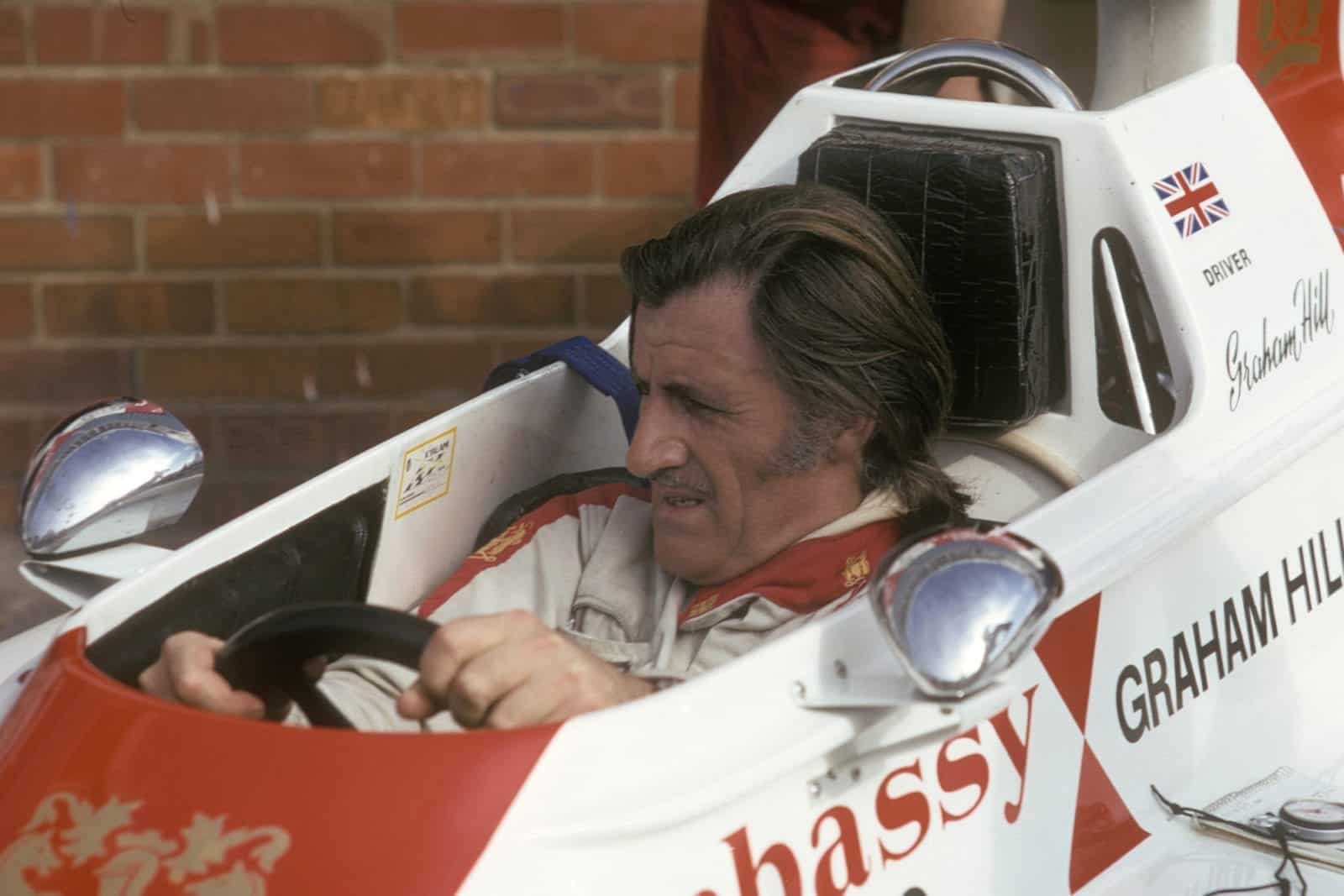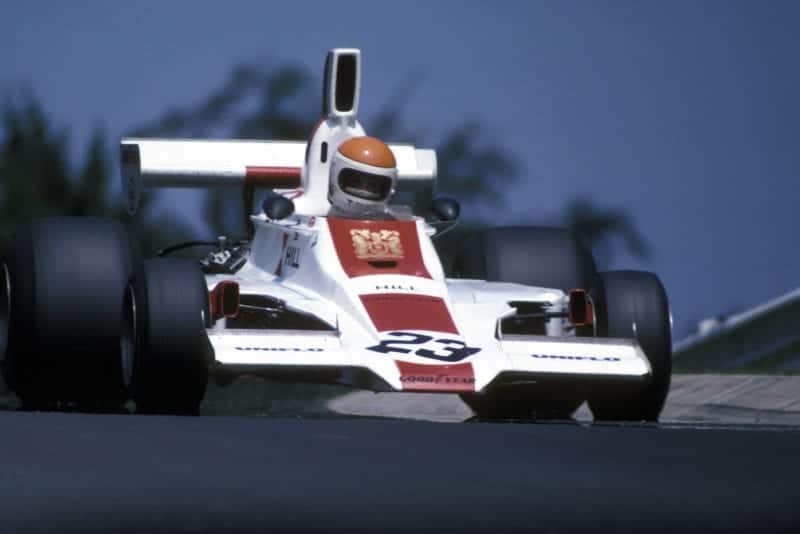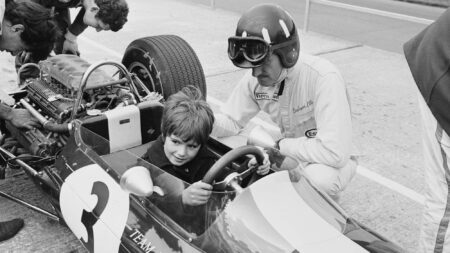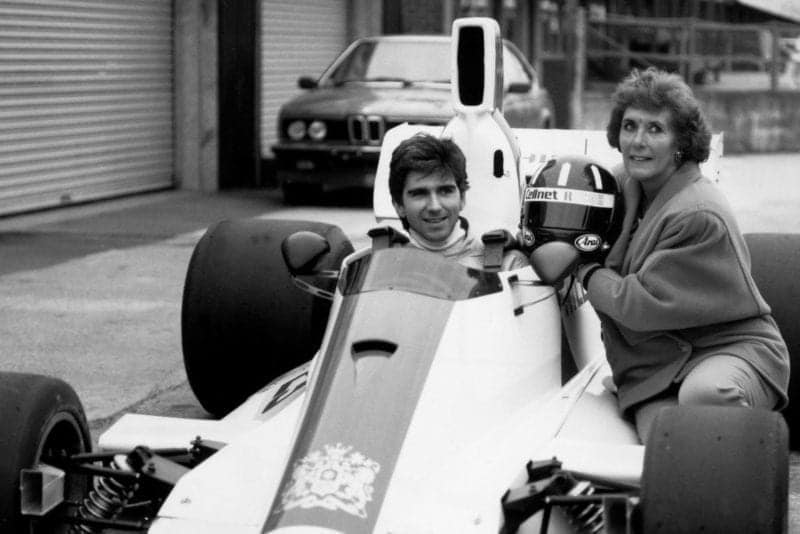It turned out that Tony’s way of thanking the mechanics, of whom I was his number two, was by giving it his all every time he went out in the car. And he soon won us over that way by qualifying seventh for his first race with us, Zolder. He retired on that occasion, but then finished sixth, seventh and seventh in consecutive grands prix — in Sweden, Holland and France — before he, too, got a reality check: a mid-season spate of difficult qualifying sessions, shunts (not all his fault) and retirements.
Part of the reason for this slump was that the team was at full stretch building GH2. Graham could see the potential of his young squad and wanted to be sure of maximising it in 1976. In those days, of course, the British F1 teams were ‘assemblers’: GH2’s monocoque was built by TC Prototypes over in Northampton, its bodywork came from Specialised Mouldings in Huntingdon and its suspension parts were made by BS Fabrications. And like almost every other car of the period, it featured a DFV mated to a Hewland gearbox. We just had to bolt it together as well as we possibly could. It sounds easy, but there was no slack within the team to take up the extra strain, and I can assure you that we were very busy. And excited. With Brise and Smallman we felt sure we had a winning combination.
GH2, though, proved troublesome at its first test, at Silverstone in October: the GH1 was quicker and easier to drive. It was the same story at Paul Ricard the following month. And again, two weeks later. With time running out and winter closing in, the guys in France tried something desperate: they replaced GH2’s rear end — engine, gearbox, suspension — with that from the GH1 they also had with them.
Three laps are all it takes to realise that this really is a good racing car with fantastic turn-in and excellent traction. I can imagine Brise’s relief that day at Paul Ricard: no more snap oversteer. At last he had a balanced chassis he could work with, begin to finesse rather than search frantically for a big fix. The subsequent telex caused a similar wave of relief in the factory. Everyone was smiling again. 1976 here we come.
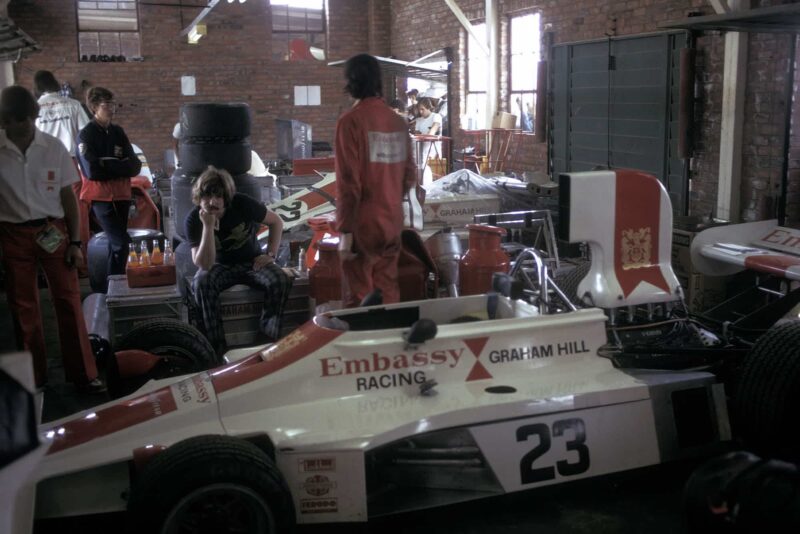
The Embassy Hill pit garage during the 1975 South African GP
DPPI
It’s all flooding back to me now. And I mean all. I had expected this track test to be more significant than most, more emotional — but not this emotional. Just seeing the car for the first time, parked up in Dijon’s pits, unlocks me: I see faces, hear the banter, smell the workshop. You never forget such things but you tend to put them to the back of your mind. Until something like this happens. It’s overwhelming. And this is before I settle into a car I helped to build 29 years ago.
I fit fine but I’m concerned by the presence of the original titanium brake pedal. I advise current owner Klaus Fiedler that this should be in his trophy cabinet, not on his beautifully restored car. One such item snapped off and caused Clay Regazzoni’s paralysing accident at Long Beach in 1980.
That, though, is my only gripe. The car is in better shape than it was when we had it, and is a credit to Klaus. Seeing it again confirms my suspicion that Mr Smallman was a Gordon Murray fan. GH2 is small and neat, its tall conning-tower cockpit and shallow, sloping sidepods a definite nod in the direction of Murray’s Brabham BT44B.
But how I cursed those sidepods at the time. As the youngest and most flexible member of the team it was my job to fit the bag tanks into them. It was a sod: corking the rivets, putting tank tape over them all, pulling the bags through and contorting yourself so that you could tighten up the jubilee clips on the flap valves that connected the five bags (two in each sidepod and one behind the driver). I can still feel those skinned knuckles. Because Klaus races the car over much shorter distances, he has been spared this job, lucky fella. Today the sidepods contain battery and fire extinguisher.
